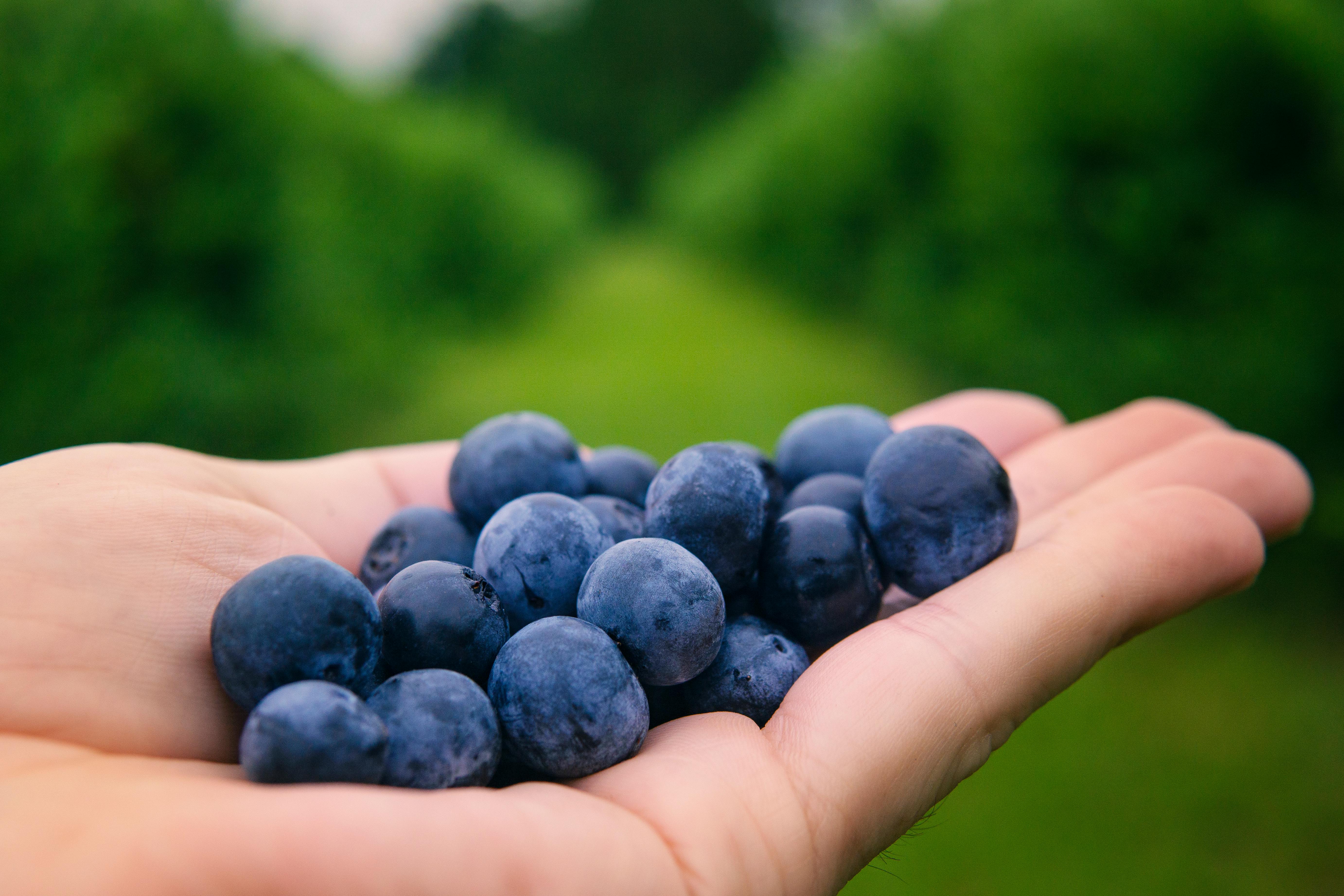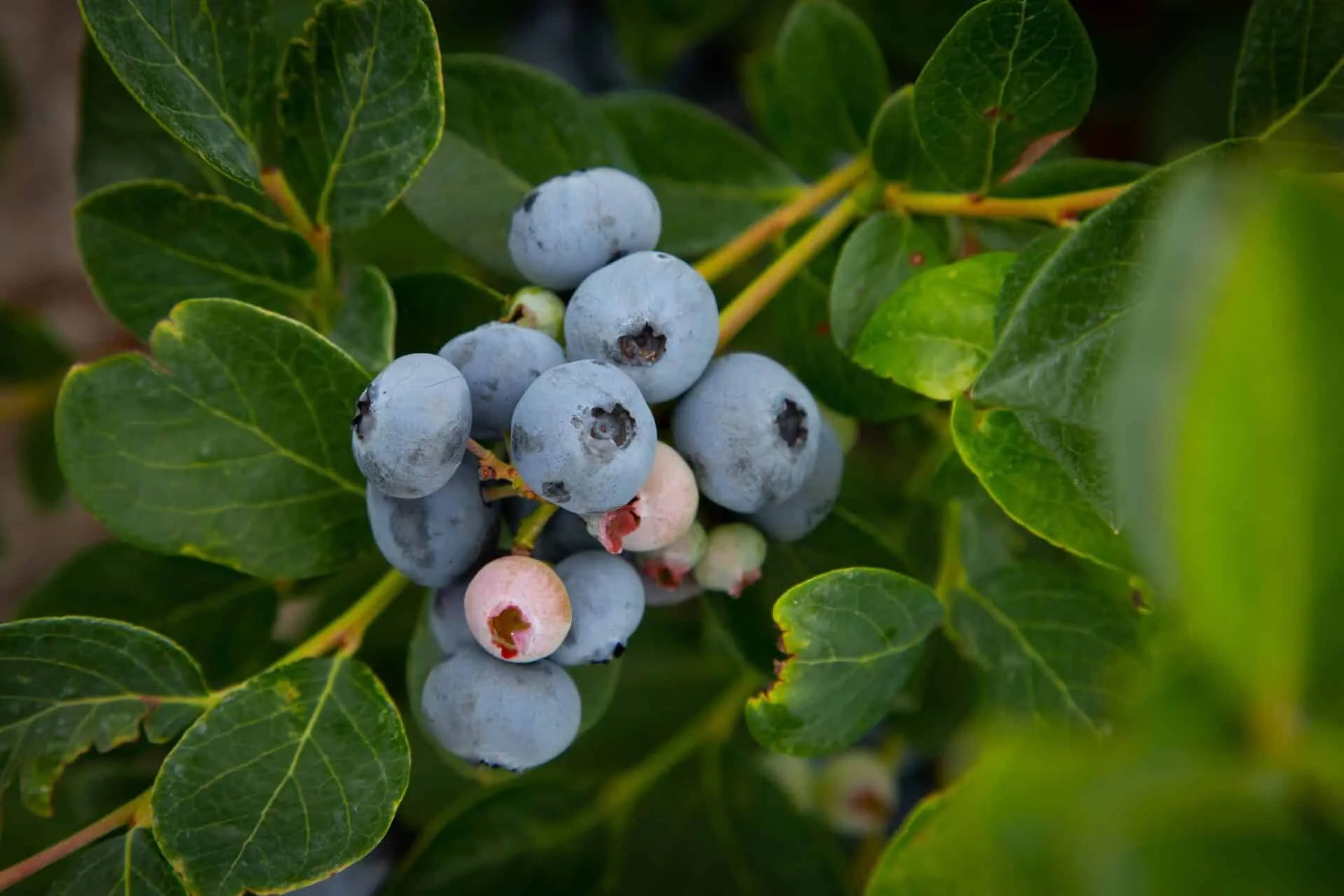Growing blueberries in your own backyard can be an exciting and rewarding experience. However, if your blueberry plants are not growing, it can be quite frustrating. There are a variety of factors that could be affecting the growth of your blueberry plants, ranging from poor soil conditions to improper pruning and fertilization techniques. In this article, we will discuss why your blueberries may not be growing and the steps you can take to help them reach their full potential.1. Improper soil pH: Blueberry plants prefer acidic soil with a pH of 4.5-5.5. If the soil is too alkaline or too acidic, the plant may not be able to absorb nutrients from the soil and will not grow properly.
2. Lack of water: Without adequate water, blueberry plants cannot absorb enough nutrients from the soil and will not grow properly.
3. Too much fertilizer: Too much fertilizer can lead to nutrient imbalances in the soil that can prevent your blueberry plant from growing properly.
4. Poor drainage: Poor drainage can cause your blueberry plant’s roots to become waterlogged and lead to root rot, which can prevent it from growing properly.
5. Pest or disease infestation: Pests and diseases can weaken your blueberry plant and prevent it from growing properly. Look for signs of pests or diseases such as discolored leaves, wilting, or stunted growth.
Types of Soil for Blueberry Plants
Blueberries are a popular and nutritious fruit that is easy to grow in the garden or in containers. However, it is important to choose the right type of soil for blueberry plants to ensure optimum growth and fruit production. The ideal soil for blueberries should be well-drained and have a slightly acidic pH of 5.0-5.5. It should also have plenty of organic matter such as compost or peat moss to help retain moisture and provide essential nutrients. Here are some of the different types of soil that can be used for blueberry plants:
Sandy Loam – Sandy loam is a type of soil made up of sand, silt, and clay particles. It is well-drained and has good aeration, making it perfect for blueberries. This type of soil tends to be light and airy, which helps promote root growth and nutrient uptake in the plants.
Peat Moss – Peat moss is another popular choice for growing blueberries as it retains moisture while still allowing adequate drainage. It also helps to lower the pH of the soil, making it more acidic which is ideal for blueberry plants. Peat moss should be mixed into sandy loam at a ratio of 1 part peat moss to 3 parts sandy loam.
Compost – Compost can also be added to sandy loam when planting blueberries as it provides essential nutrients such as nitrogen, phosphorus, and potassium which help promote healthy plant growth and fruit production. Compost should be mixed into sandy loam at a ratio of 1 part compost to 4 parts sandy loam.
Coconut Coir – Coconut coir is another great option for growing blueberries as it holds moisture while still allowing adequate drainage through its fibrous texture. Coconut coir can be mixed into sandy loam at a ratio of 1 part coconut coir to 3 parts sandy loam or added directly around the roots when planting out young blueberry plants into containers or garden beds.
In addition to these soils, there are also specialty soils available specifically for growing acid loving plants like blueberries which usually contain peat moss, perlite, vermiculite or other organic materials that help improve drainage and increase acidity levels in the soil. When choosing a specialty soil make sure it has been formulated specifically for acid loving plants such as blueberries before using it in your garden or containers.
Understanding the Nutrient Needs of Blueberry Plants
Blueberry plants are known for their sweet, delicious fruit. However, in order to produce abundant yields of healthy fruit, blueberry plants need proper nutrition for optimal growth and development. Knowing which nutrients are required and when they should be applied can help ensure that your blueberry bushes thrive and produce delicious crops.
The primary nutrients needed by blueberry plants are nitrogen, phosphorus, potassium and magnesium. Nitrogen is essential for the growth and development of foliage, while phosphorus is important for flower and fruit production. Potassium helps promote strong roots and stems, while magnesium helps to improve soil fertility and plant health. These nutrients should be applied at least once a year in the spring or early summer before bud break. Additionally, a light application of fertilizer can be applied during the summer months to provide additional nutrient support during fruit production.
In addition to the primary macronutrients discussed above, micro-nutrients such as iron, zinc, manganese and boron are also important for blueberry bushes to grow healthily. Iron is especially essential because it helps increase chlorophyll production which in turn improves plant growth and photosynthesis. Zinc plays an important role in root development while manganese helps with fruit ripening. Lastly, boron helps promote strong cell walls which improves overall plant health. All of these micronutrients should be applied throughout the growing season according to label directions.
By understanding your soil’s nutrient content as well as your blueberry plant’s needs you can determine when and how much fertilizer you need to apply each year for optimal results. Properly fertilizing your blueberries will ensure that they get all the nutrients they need to produce sweet, delicious fruits year after year!
The Role of Sunlight in Blueberry Plant Growth
Sunlight plays a major role in the growth of blueberry plants. Blueberries require sunlight to photosynthesize and produce carbohydrates which are essential for plant growth. Without adequate amounts of sunlight, blueberry plants will not be able to produce enough energy to grow properly.
In addition to providing energy for photosynthesis, sunlight is also important for the production of essential vitamins and minerals. Sunlight helps stimulate the production of vitamins A, C, and E which are necessary for healthy plant growth. It also helps promote the production of antioxidants which help protect the plants from environmental stressors such as extreme temperatures or pests.
Sunlight is also important for the development of flowers and fruit in blueberry plants. Sunlight helps stimulate flower buds to open and form fruit on the branches. Additionally, sunlight helps keep the leaves green and healthy which helps increase photosynthesis efficiency and ensures that a sufficient amount of carbohydrates are produced for plant growth.
In summary, sunlight is essential for blueberry plant growth and development. Without adequate amounts of sunlight, blueberry plants would not be able to produce enough energy or vital nutrients needed for healthy growth. Sunlight is also necessary for flower and fruit production which are important parts of a blueberry plant’s life cycle. Therefore, it is important to ensure that your blueberry plants receive an adequate amount of direct sunlight each day in order to maximize their potential growth potential.
Dealing with Pests and Diseases That Affect Blueberries
Blueberries are a delicious and nutritious addition to any garden. However, there are many pests and diseases that can affect blueberry plants. It is important to identify the problem before taking action. Common pests include aphids, spider mites, Japanese beetles, and scale insects. Common diseases include leaf spot, root rot, and powdery mildew. By understanding the signs of an infestation or infection and taking the appropriate steps to control it, you can keep your blueberry plants healthy and productive.
Aphids are small insects that can weaken blueberry plants by feeding on the sap from their leaves and stems. They also produce a sticky substance known as honeydew which can attract ants and other pests. To control aphids, you should prune affected branches to remove any infested areas. You may also want to use an insecticidal soap or horticultural oil spray to kill the insects without harming beneficial insects or bees in your garden.
Spider mites are another common pest that can damage blueberry plants by sucking their sap. These tiny mites create webs on leaves which can reduce overall plant health if not removed promptly. As with aphids, you should prune affected branches if possible and use an insecticidal soap or horticultural oil spray to help control them. You may also want to use a high-pressure water spray to knock them off leaves as well as any webs they have created.
Japanese beetles feed on the foliage of blueberry plants causing severe damage if left unchecked. You can handpick these insects off plants or use traps baited with pheromones as a form of control. If you find large numbers of Japanese beetles in your garden, you should consider using an insecticide for more effective results.
Scale insects are small pests that feed on sap from blueberry leaves and stems resulting in stunted growth or yellowing of foliage. Pruning affected branches is an effective way to reduce infestations while insecticidal soaps or horticultural oils will help to control existing populations of scale insects on plants.
Leaf spot is a fungal disease caused by a variety of fungi that affects the foliage of blueberry plants resulting in yellowing or browning patches on leaves which may eventually drop off from the plant prematurely. To prevent leaf spot, you should avoid overhead watering whenever possible since this helps spread spores through droplets in the air; instead water at soil level using drip irrigation systems when possible. Pruning off any affected foliage will help reduce spread of disease while applying fungicide sprays may be necessary in cases where leaf spot has become severe or widespread throughout a planting area.
Root rot is another fungal disease commonly found in blueberries caused by either Phytophthora cinnamomi or Pythium spp fungi which attack young roots resulting in wilting foliage due to lack of water uptake into plant tissues; this may eventually lead to death if left unchecked for too long. To prevent root rot it is important not to overwater plants since this encourages growth of these fungi; instead ensure adequate drainage is provided for each planting bed along with proper spacing between individual shrubs within beds so air flow is improved between different areas within each bed.
Powdery mildew is another fungal disease that affects blueberries resulting in white powdery patches on both sides of leaf surfaces; this causes weakened photosynthesis capabilities within plant tissues leading to reduced fruiting output if left unchecked for too long periods of time . To prevent powdery mildew it is important not only to avoid overhead watering but also make sure temperatures remain moderate between 65-80°F (18-27°C) during summer months; applying fungicide sprays when necessary will help reduce severity levels when outbreaks occur but prevention methods should be used whenever possible prior to infection taking place.
By understanding how different pests and diseases affect blueberries it becomes easier for gardeners to identify problems early on before they become severe; this allows for quicker responses using appropriate control measures such as pruning off affected parts along with using insecticides/fungicides when necessary so damages can be minimized while still allowing these delicious fruits be enjoyed by all!

Ensuring Proper Watering for Your Blueberry Plant
Proper watering is essential for healthy blueberry plants. If the soil around your blueberry plant is too dry, it can cause the plant to become stressed and eventually die. To ensure your blueberry plant gets the right amount of water, you should water it regularly and deeply. You should also check the soil moisture levels before you water to make sure it isn’t already saturated. You should also consider using a drip irrigation system or mulching to help conserve water and keep the soil moist.
When watering your blueberry plant, use a slow trickle of water and avoid using a stream of water that can wash away the soil around the roots. Make sure you don’t over-water as this can cause root rot and other diseases in your plants. The frequency of watering will depend on several factors including the climate, soil type, and amount of rainfall in your area. In general, blueberry plants should be watered every 5-7 days during the growing season and every 10-14 days during the winter months.
To determine when to water your blueberry plant, check the soil around it for moisture levels. If it feels dry about an inch below the surface, then it’s time to give it some water. It’s important not to let your blueberries dry out completely as this can kill them off quickly. Also, avoid watering during midday when temperatures are high as this can lead to evaporation before the plant has time to absorb any moisture from the soil.
By following these tips for ensuring proper watering for your blueberry plant, you can help keep it healthy year-round so that you can enjoy its sweet fruit in season!
How to Prune Your Blueberry Plant
Pruning your blueberry plant is an important step in keeping it healthy and productive. Regular pruning helps maintain the size and shape of the plant, encourages new growth, and eliminates dead or diseased wood. Pruning should be done in late winter or early spring before new growth begins. Start by removing any dead, diseased, or broken branches. Then thin out any overly dense branches to allow light and air to reach the interior of the plant. Finally, prune back any overly tall shoots to keep the height of the plant in check.
How to Fertilize Your Blueberry Plant
Fertilizing your blueberry plant is essential for optimal growth and fruit production. A balanced fertilizer with a 10-10-10 or 12-12-12 ratio should be applied in early spring before new growth begins. Apply 1/2 pound of fertilizer per 100 square feet of planting area around the base of the plant, then water it in thoroughly. Follow up with additional fertilization every 4 to 6 weeks throughout the growing season for best results. Be sure not to overfertilize as this can damage your blueberry plants and reduce fruit production.
Identifying Other Factors That Could Be Affecting Your Blueberries
Blueberry production can be affected by a variety of environmental factors such as weather, soil, and pests. To identify other factors that might be impacting blueberry production, growers need to consider other potential causes. One factor could be nutrient deficiencies in the soil; poorly drained soils can lead to an accumulation of salts that can reduce berry yields. Additionally, inadequate amounts of nitrogen, phosphorus, and potassium in the soil can lead to decreased yields.
Pests and diseases are also a major factor in blueberry production. Diseases such as mummy berry and root rot can cause significant damage to blueberry crops and reduce yields. Insect pests such as aphids and mites can also cause damage if not controlled properly. Additionally, birds, deer, and other wildlife are often attracted to blueberries and can cause damage if left unchecked.
Growers should also consider the effects of cultural practices on their blueberry crops. Proper pruning techniques and fertilization schedules are essential for maintaining healthy plants and increasing yields. Additionally, irrigation management is important for ensuring that plants have enough water without becoming waterlogged or stressed from drought conditions.
Finally, growers should consider the effects of weather on their blueberries; cold temperatures during flowering season can reduce pollination rates and decrease yields while heat waves during the summer months may lead to excessive ripening which could reduce quality. Therefore, it is important for growers to monitor local weather patterns so they can anticipate any potential issues before they arise.

Conclusion
Blueberry production can be a tricky business, but with the right knowledge and preparation, you can have a successful harvest. To make sure your blueberry plants are healthy and thriving, you should ensure that they receive adequate sunlight, water, and nutrients. You should also check for pests and diseases that may be causing problems. By monitoring your blueberry plants carefully and taking action when necessary, you can have a bountiful harvest of delicious blueberries.
No matter what the reason for your blueberries not growing is, it’s important to take corrective action as soon as possible. With patience and persistence, you’ll eventually be able to successfully grow a crop of delicious blueberries.



